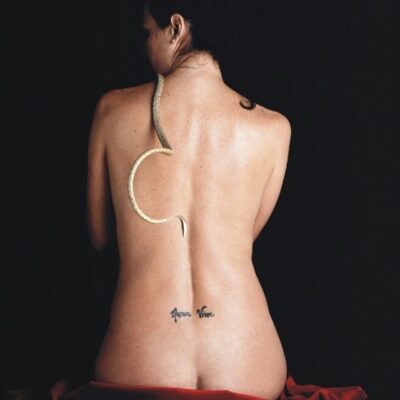
The matriarch of Brazilian contemporary art: Anna Maria Maiolino /PSSSIIIUUU…
Between May 7th and July 24th, a retrospective exhibition of the Italian-Brazilian artist Anna Maria Maiolino (Scalea, IT, 1942) was held at the Tomie Ohtake Institute in São Paulo, Brazil, with the name of “PSSSIIIUUU…”, an ambiguous onomatopoeic word evoking silence, flirting, or a distant call. Planned for over...

(Book Review) Working with Feminism: Curating and Exhibitions in Eastern Europe
Although published in 2012, the questions and problems relating to feminist curating in Eastern Europe that the book Working with Feminism: Curating and Exhibitions in Eastern Europe brings forward, are still relevant. The book compiles articles based on an international symposium titled Common Differences: Issues for Feminist Curating in...

Review: Ann Snitow, Visitors. An American Feminist in East Central Europe, 2020. Polish translation in 2022
One of the most interesting books that I have read lately was Ann Snitow’s Visitors. An American Feminist in East Central Europe. Originally published in 2020 in the New Village Press, it appeared in Polish translation (by Agnieszka Grzybek) a few weeks ago. At the beginning of the 1990s,...

Bale Literal’s lexical: a Laura Lima show
It is June, 2019: Rio de Janeiro / Brazil. Laura Lima, a Brazilian philosopher, artist and feminist activist presents ‘Bale Literal’ at A Gentil Carioca, one of the most important art galleries in the country. Bale Literal was an unprecedented work that connected the two gallery buildings directly to...

Objects, the unusual and the unrepresentable in the production of Kati Horna
Mexican art from the first half of the 20th century reveals a necessary and inevitable dialogue with the international context. Although Mexican art sought the identity construction of “Mexicanness”, the links with the international context are unquestionable, and such is the case of Hungarian artist Kati Horna. She arrived...

Wild wisdom: the woman artist and the political discourse of self-portrait in Oriana Duarte
The following text examines part of the analysis undertaken in my MA Thesis entitled Selvagem sabedoria: a mulher artista e o discurso político do autorretrato em Oriana Duarte [Wild wisdom: the woman artist and the political discourse of self-portrait in Oriana Duarte], published at the Universidade Federal de Pernambuco’s...

Women solidarity, creative resistance, and the gendered dimension of the war
The powerful photo of baby strollers left at the railway station in the Polish city of Przemyśl went viral and was widely shared on social media as a symbol of female solidarity and the camaraderie of motherhood par excellence. This ephemeral and spontaneous action of Polish mothers in supporting...

Feminist Interventions in Croatia: Female Body in Public Space
In this article*, through three examples of feminist interventions by Croatian female artists from different generations, I will demonstrate how the female body occupies the public space, how it uses the public space in an inappropriate way, debates with it and tolerates repercussions when the norm is violated. The...

Ecology and Womxn Artists in Latin America
In the 1970s and 1980s, a number of women artists in Latin America began to work with questions related to the environment, ecology, and land. Alicia Barney from Colombia, Yeni & Nan from Venezuela, and Regina Vater from Brazil, among others, implemented experimental and critical strategies into their artistic...

Restoration of Capitalism: Repatriarchalization of Society (Book review)
BOOK REVIEW: Lilijana Burcar, Restauracija kapitalizma: repatrijarhalizacija društva, Zagreb: Institute of Ethnology and Folklore Research, Centre for Women’s Studies, 2020 Socialist history and legacy have been explored largely from the hegemonic, Western perspective in the globalized (academic) world, and the authors have been forced to ‘catch up’ with...




